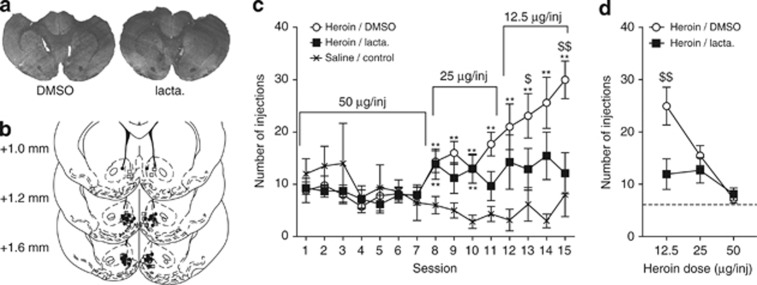Figure 5.
Protein degradation in the NAcc shell is necessary for the development of an adaptive addictive behavior to a decrease in reward delivery in self-administration paradigm. Rats were allowed to self-administer intra-venous heroin according to an FR1 schedule 1 h after intra-NAcc injections of lactacystin (heroin/lacta. group, n=9) or vehicle (heroin/DMSO group, n=10). Saline/control rats (n=6) were allowed to self-administer saline under the same schedule. (a) Representative microphotographic view of injection sites in animals treated with DMSO (left) and lactacystin (right). (b) Schematic localization of injection sites of DMSO (squares) and lactacystin (circles) in coronal sections ranging from +1.6 to +1.0 mm from Bregma. (c) Number of injections during daily sessions indicates that heroin/DMSO rats developed adaptations to decreasing dose of heroin, whereas heroin/lacta.-treated animals did not. (d) Number of injections per session as a function of the dose of heroin. The dotted line indicates the average number of injection in the saline/control group. The heroin/DMSO group exhibits a strong increase in number of injections for the lower dose compared with the heroin/lacta. group. Data are presented as mean number of injections±SEM. **p<0.01 different from saline control group, $p<0.05 and $$p<0.01 compared with lactacystin-treated group.

